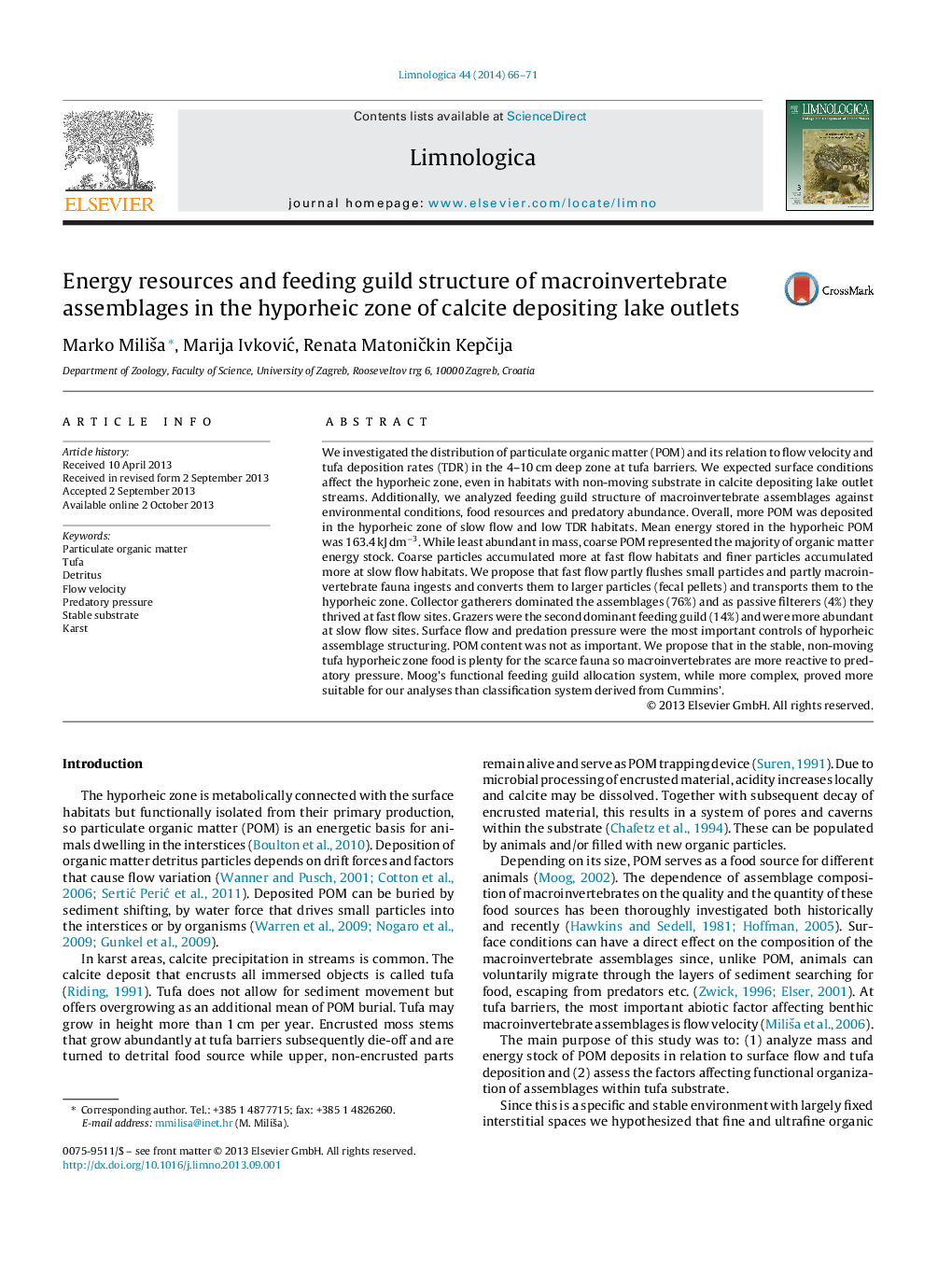| کد مقاله | کد نشریه | سال انتشار | مقاله انگلیسی | نسخه تمام متن |
|---|---|---|---|---|
| 4400433 | 1618578 | 2014 | 6 صفحه PDF | دانلود رایگان |
We investigated the distribution of particulate organic matter (POM) and its relation to flow velocity and tufa deposition rates (TDR) in the 4–10 cm deep zone at tufa barriers. We expected surface conditions affect the hyporheic zone, even in habitats with non-moving substrate in calcite depositing lake outlet streams. Additionally, we analyzed feeding guild structure of macroinvertebrate assemblages against environmental conditions, food resources and predatory abundance. Overall, more POM was deposited in the hyporheic zone of slow flow and low TDR habitats. Mean energy stored in the hyporheic POM was 163.4 kJ dm−3. While least abundant in mass, coarse POM represented the majority of organic matter energy stock. Coarse particles accumulated more at fast flow habitats and finer particles accumulated more at slow flow habitats. We propose that fast flow partly flushes small particles and partly macroinvertebrate fauna ingests and converts them to larger particles (fecal pellets) and transports them to the hyporheic zone. Collector gatherers dominated the assemblages (76%) and as passive filterers (4%) they thrived at fast flow sites. Grazers were the second dominant feeding guild (14%) and were more abundant at slow flow sites. Surface flow and predation pressure were the most important controls of hyporheic assemblage structuring. POM content was not as important. We propose that in the stable, non-moving tufa hyporheic zone food is plenty for the scarce fauna so macroinvertebrates are more reactive to predatory pressure. Moog's functional feeding guild allocation system, while more complex, proved more suitable for our analyses than classification system derived from Cummins’.
Journal: Limnologica - Ecology and Management of Inland Waters - Volume 44, January 2014, Pages 66–71
